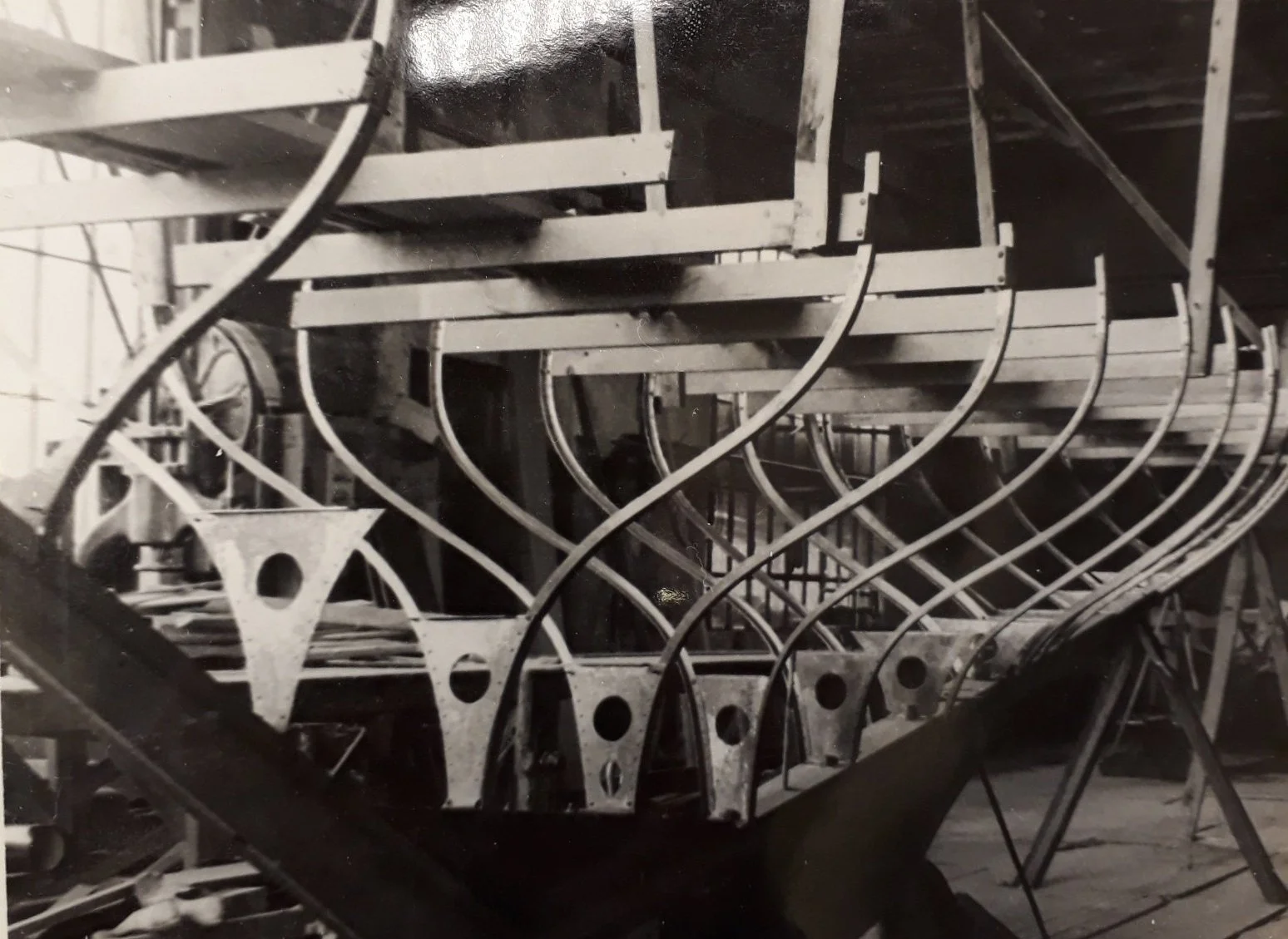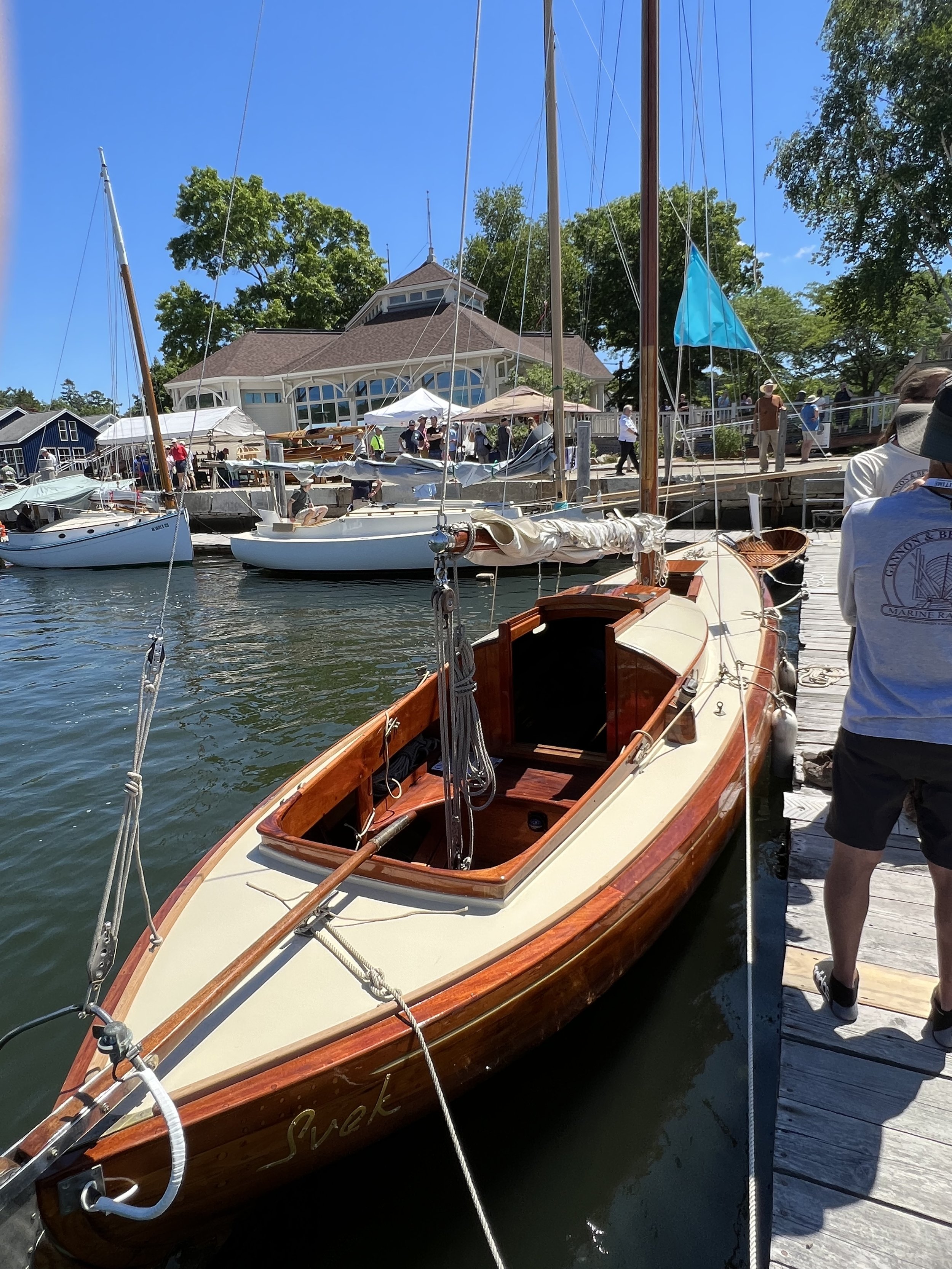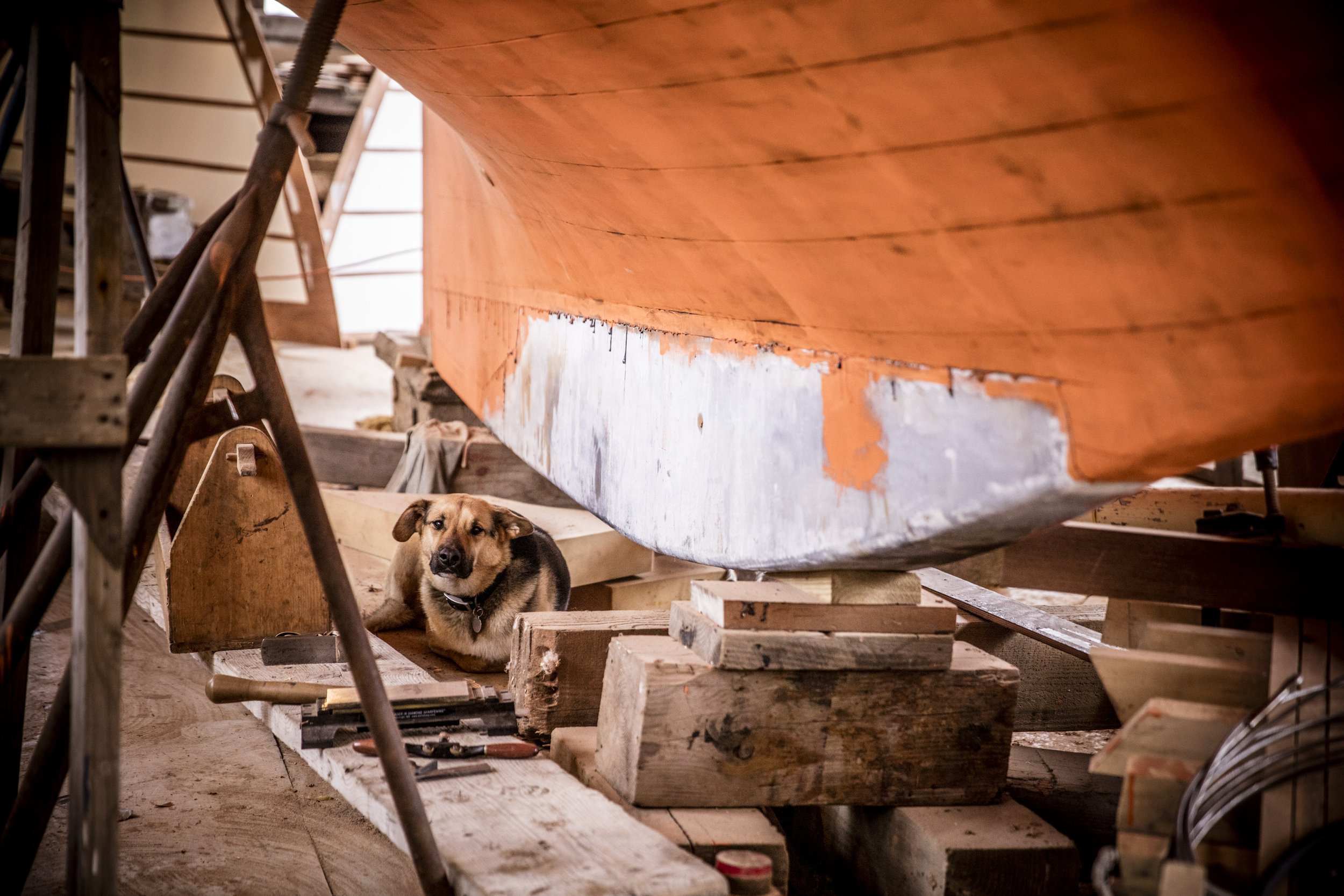SVEK- The American Sibling
Ross Gannon fitting the garboard Whiskey Plank. Photo Patrick Otten
A summary of Melbourne’s historic Tumlaren fleet goes something like this.
Seven boats are racing regularly with the classics. Two are well maintained and cruise infrequently. Two are for sale and five are on the hard undergoing or waiting restoration. Thats a potential fleet of fourteen to match their post war heyday.
And then this week we get news of an American sibling, restored by the legendary Martha’s Vineyard shipwrights, Gannon and Benjamin. It might just be a fantasy, but imagine the interest around this nominally one design class, if SVEK could join her sisters here in Melbourne…..
This is a special boat. It is one of six ordered directly from Knud Reimers in Sweden in 1936 by the Chicago Yacht Club. Like the St Kilda YC in 1937, they wanted to start a one design fleet. SVEK has spruce topsides and follows Reimers original very spare construction with a steel frame and floor every 3rd and paired at the chain plates. That’s probably fine in the fresh waters of Lake Michigan but Melbourne boats sailing on Port Phillip and built locally under license, wisely adopted all timber frames.
The B&W photos below from the Swedish Maritime Museum, show these six boats being built in the Johansson yard outside Stockholm.
SVEK ribbing. Photo Patrick Otten
Charlie Peel built YVONNE 1937. Re-ribbed in 2020. Photo Mark Chew
Her custodian Patrick Otton writes
You're now busy with your sailing season. Svek is put away covered in the shed. After a successful and productive 6 months restoring her with Gannon & Benjamin, Martha's Vineyard, MA USA, I sailed Svek for two seasons and now realise she is best passed on to new owners who can appreciate her excellence. I'm wondering if anyone in your half of the world would be interested? It would be great to see Svek sailing with her sisters!
1936 TUMLARE #59 SVEK - Winner Wooden Boat ‘Best in Show’ 2022
In storage for 40 years. Now fully restored by Gannon & Benjamin and sailing again. Keel refastened, spars and running gear traditionally re-rigged. New Hood sails and custom trailer.
Patrick Otten. Harwich, Cape Cod, MA
Svek after launching at Mystic Seaport 2022. Photo Patrick Otten
Please contact helm@southernwoodenboatsailing.com if you are interested and we will put you in touch with Patrick. You will need a fistful of USDollars and a 40’ container.
I visited the Gannon and Benjamin Yard in 2017, before the existence of SWS, and wrote this as short reflection
The rain slanted across the deck of the ugly little car ferry as it surged out of Woods Hole harbour, across Vineyard Sound. May had just begun, but the icy cold and 25 knot north-westerly was telling me that spring had not yet arrived. As the horn on the ferry sounded the Cory’s Shearwaters passed the bows with wings fixed solid. I stood alone on the steel foredeck, and stared into the greyness wondering how this uninspiring land on the horizon could possibly be the famous Martha’s Vineyard, playground of the rich and famous. But I wasn’t here to visit them.
As the ferry swung into the open bay at Vineyard Haven on my right behind a short breakwater a selection of interesting wooden boats tugged at their moorings in the chop, but on my left a schooner stood out proudly away from the others, looking confident and comfortable just off the end of fragile pier coming off the beach. On her masthead pennant was the single word JUNO, and I knew I had come to the right place.I got off the ferry and walked the hundred yards up the beachfront street to a wooden building. There was no name board or sign but the rack of varnished masts and the singing of a bandsaw inside showed me the way and I slid open a barn door and the smell of cedar and oak and the warmth of a pot bellied stove greeted me. The first part of the shed was only small, big enough to hold an upturned dinghy a few bench tools and rows of draws clearly labelled. You couldn’t call it tidy but everything belonged, and the mood was one of quiet but focussed intent. No radio was playing….the sounds of the tools and the sea only thirty yards away filled the silence. Beyond this first area I could see the hulls two boats in a second larger shed even closer to the water….but more of these later. A young shipwright invited me in to stand by the stove and said Nat would be here shortly. A few minutes later the door slid open again and the room lit up as an unassuming bearded man in a dusty cable knit jumper walked towards me. He moved through the shed, feet wide as if crossing a moving deck, held his hand out and with a beaming smile and a soft Hudson Valley lilt said, “Mark? I’m Nat…a pleasure to meet you”
In 2002 I read a small book called simply “Wooden Boats” by Michael Ruhlman. It’s the story of the Gannon and Benjamin Marine Railway in Martha’s Vineyard and it is also the best explanation I have yet read of the fascination of making and owning timber sailing boats. Having cherished and re-read the text for the last fourteen years I was a little nervous to meet the men who create such majestic vessels, but that nervousness soon vanished as Nat showed me round his sheds and yards, talking to his colleagues about details of their work and taking a genuine interest in my limited knowledge and the state of wooden boat sailing in Australia. The temptation to romanticise the yard is strong. The methods are strictly traditional not out of any obligation or purist fervour but because this works best. Its progeny are some of the most beautiful craft sailing the oceans, and the restoration projects are usually on boats from the most elite of designers. Stephens, Rhodes, Herreshoff and yet there is an underlying practicality to what they do that makes the place remarkably normal. And although he is best known for the three larger schooners that have sailed the world, Juno, Rebecca and Charlotte, of his 86 designs to date, most are small, unassuming but perfectly formed gems.
(Click to Enlarge)


















